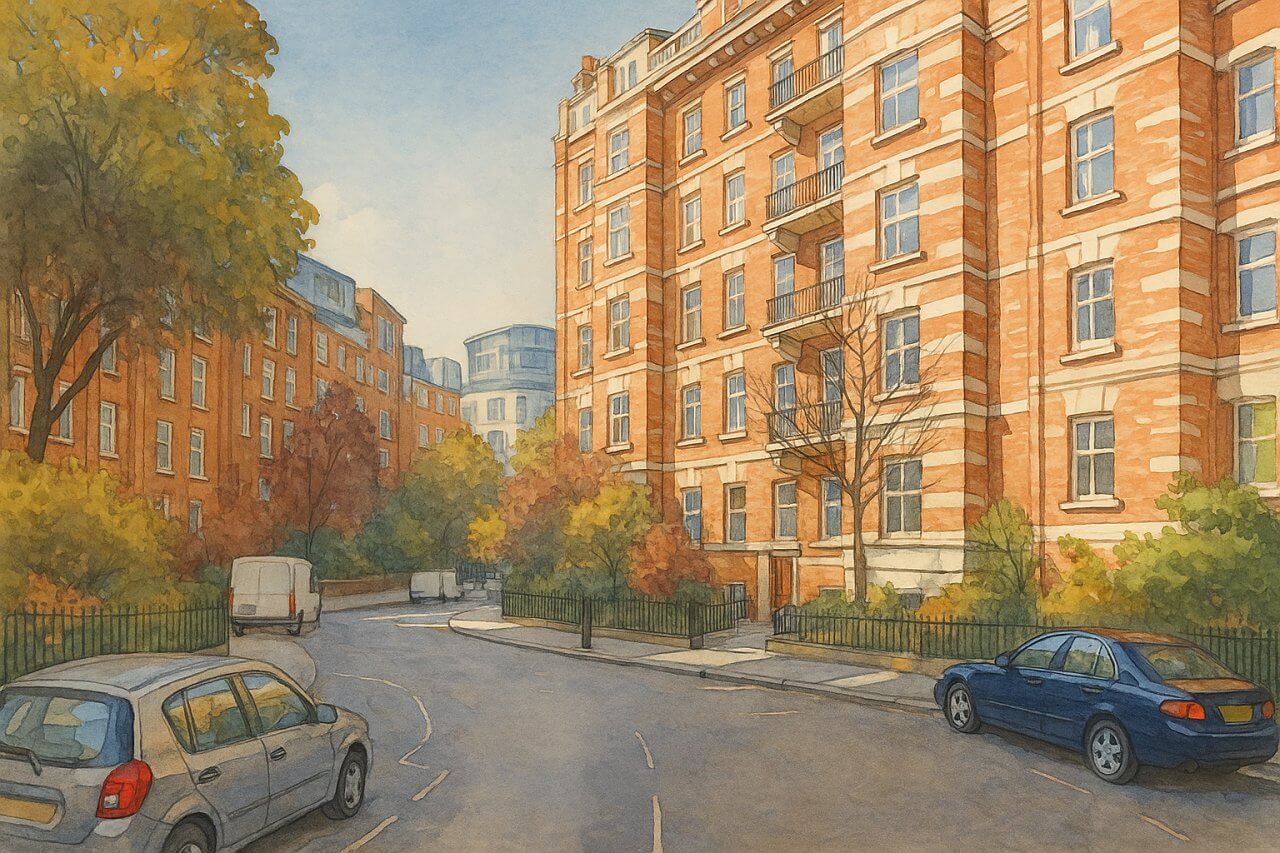
Thirleby Road, London
Thirleby Road is located in the City of Westminster, in central London. It lies just behind Westminster Cathedral and connects Ambrosden Avenue and Howick Place on its northwestern end to Francis Street on the southeastern end, directly across from Emily Hill Street.
This small street sits within a highly walkable area known for its ecclesiastical and administrative buildings, positioned between Victoria Street and the quieter residential lanes of Pimlico and Westminster.
Length and Layout of the Road
Thirleby Road is a short two-way road, measuring approximately 200 feet (around 60 metres) in length. Though brief in distance, it acts as a practical and accessible route for local residents and visitors moving between Ambrosden Avenue and Francis Street.
The road features wide pavements on both sides and maintains a calm character with restricted vehicle flow, preserving its charm and pedestrian-friendliness.
History and Development
Thirleby Road was developed during the late 19th century, at a time when much of the surrounding area—formerly owned by the Westminster Abbey estate—was undergoing transformation to accommodate London's growing population.
The nearby construction of Westminster Cathedral (completed in 1903) spurred further urbanisation in this part of Victoria, leading to the introduction of smaller residential streets like Thirleby Road to support local housing and access routes.
Origin of the Name
The road takes its name from Thomas Thirlby, who was the first and only Bishop of Westminster from 1540 to 1550. The spelling of the road name omits the second "l" found in Thirlby's name, a common occurrence in historical street naming conventions of the time.
The spelling of Thirleby Road differs slightly from the bishop's surname, with the street name including an additional “e” after the “l” — a variation that may have resulted from transcription errors or stylistic preferences during the period of street naming in the late 19th century.
Thirleby is typically pronounced as “THURL-bee”, with the emphasis on the first syllable. Using the International Phonetic Alphabet (IPA), it is rendered as /ˈθɜːlbi/  . Despite its unusual spelling, the name is straightforward once heard aloud, with the “ir” sounding like the “ur” in “fur” and the final “by” sounding like “bee”.
. Despite its unusual spelling, the name is straightforward once heard aloud, with the “ir” sounding like the “ur” in “fur” and the final “by” sounding like “bee”.
Thirleby Road was officially named by the late 19th century, most likely in tribute to Westminster's short-lived diocesan status during the English Reformation.
Character and Atmosphere
Despite its proximity to busy Victoria Street, Thirleby Road remains quiet and residential in nature. It serves mainly as a rear access road to properties on Ambrosden Avenue and Francis Street and is used primarily by locals and delivery vehicles.
The buildings along the street exhibit Edwardian and early 20th-century brick façades, some with modest decorative stonework. There is little in the way of retail frontage, preserving a peaceful tone that contrasts with the surrounding bustle.
Real Estate and Property Values
As of April 2025, property values around Thirleby Road reflect the premium nature of central Westminster. While Thirleby Road itself has few homes directly on it, nearby properties on Ambrosden Avenue and Francis Street suggest local values.
A typical two-bedroom flat near Thirleby Road averages around £1.15 million, with sizes generally ranging from 850 to 1,100 sq ft (79 to 102 sq metres). This is above the London average, reflecting its desirable central location, excellent transport links, and historic surroundings.
Nearest Underground Stations
Thirleby Road is just a 3-minute walk from Victoria Underground Station, which is served by the:
- Victoria line
- District line
- Circle line
This gives direct access to key areas across London, including Oxford Circus, King’s Cross St Pancras, and Paddington. St. James’s Park Station is also within a 10-minute walk, offering additional options on the District and Circle lines.
Nearby Bus Stops
Several major bus routes run along Victoria Street, just around the corner from Thirleby Road. The nearest bus stops include:
- Westminster Cathedral stop on Victoria Street
- Victoria Station stop on Wilton Road
These stops serve numerous routes including the 11, 24, 148, 211, 507, and C10, connecting passengers to areas such as Trafalgar Square, South Kensington, and Waterloo.
Fun Fact
Though small and seemingly unassuming, Thirleby Road sits within view of the campanile bell tower of Westminster Cathedral—London’s tallest Catholic church tower. From the right angle on Thirleby Road, visitors can glimpse the striped brickwork and Byzantine style of this iconic London landmark rising above the rooftops.
In addition, the road is part of the traditional walking routes taken by clergy and worshippers on special feast days at the Cathedral, offering a local cultural significance not immediately obvious to passers-by.
Quick Facts about Thirleby Road
- Location: City of Westminster, London
- Connects: Ambrosden Avenue / Howick Place to Francis Street
- Length: Approx. 200 feet (60 metres)
- Named after: Thomas Thirlby, Bishop of Westminster (1540–1550)
- Character: Quiet, residential, with limited traffic
- Built: Late 19th century
- Property prices (as of April 2025): ~£1.15 million for 850–1,100 sq ft (79–102 sq m)
- Nearest Tube station: Victoria (Victoria, District, and Circle lines)
- Nearest bus stops: Westminster Cathedral and Victoria Station stops
- Fun fact: Offers unique views of Westminster Cathedral’s bell tower
Map of Thirleby Road, London

Painting of Thirleby Road, London (View image in full size)